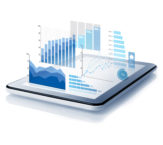SAP Data Strategy
Filter By
Browse By
- SAP Analytics and AI
- SAP Application Development and Integration
- All SAP Application Development and Integration
- SAP ABAP
- SAP ABAP Development Tools
- SAP ABAP Test Cockpit
- SAP API Management
- SAP BAPI
- SAP Basis
- SAP BRF
- SAP Business Application Studio
- SAP CMS
- SAP Design Studio
- SAP Development Tools
- SAP DevOps
- SAP EAI
- SAP EDI
- SAP Extension Suite
- SAP Fiori
- SAP Fiori Elements
- SAP Integration Suite
- SAP Low Code Application Development
- SAP Low Code Automation
- SAP Netweaver
- SAP Release Management
- SAP UI5
- SAP Web Application Server
- SAP Web IDE
- SAP Business Process Management
- SAP Center of Excellence
- SAP CIO
- SAP Customer Experience
- SAP Data and Data Management
- All SAP Data and Data Management
- SAP BW
- SAP BW/4HANA
- SAP Crystal Reporting
- SAP Data Archiving
- SAP Data Center
- SAP Data Governance
- SAP Data Integration
- SAP Data Migration
- SAP Data Quality
- SAP Data Services
- SAP Data Strategy
- SAP Data Visualization
- SAP Data Warehouse Cloud
- SAP DMS
- SAP Document Control
- SAP EIM
- SAP ETL
- SAP ETL Tools
- SAP HANA
- SAP HANA Administration
- SAP HANA Deployment Infrastructure
- SAP HANA Studio
- SAP Master Data
- SAP Master Data Governance
- SAP MDM
- SAP Enterprise Architect
- SAP Enterprise Asset Management
- SAP ERP
- SAP Finance
- All SAP Finance
- SAP Accounting
- SAP AR AP
- SAP Asset Accounting
- SAP Billing Systems
- SAP BPC
- SAP BRIM
- SAP Cash Management
- SAP Central Finance
- SAP Controlling
- SAP COPA
- SAP Cost Center Accounting
- SAP e-invoicing
- SAP FICO
- SAP Finance Automation
- SAP Financial Closing Cockpit
- SAP Financial Consolidation
- SAP Financial Planning
- SAP FX Risk
- SAP General Ledger
- SAP Global Tax Management
- SAP Hyperion
- SAP Order to Cash
- SAP Payment Processing
- SAP Profitability Analysis
- SAP Rebate Management
- SAP S/4HANA Finance
- SAP Universal Journal
- SAP Governance Risk and Compliance
- SAP Human Capital Management
- SAP Intelligent Technologies
- SAP Platform and Technology
- All SAP Platform and Technology
- SAP Business Technology Platform
- SAP Cloud Connector
- SAP Cloud Integration Platform
- SAP Cloud Migration
- SAP Cloud Platform
- SAP Cloud Providers
- SAP Cloud Strategy
- SAP Container Platform
- SAP Digital Asset Management
- SAP Digital Integration Hub
- SAP Digital Signature
- SAP HANA Enterprise Cloud
- SAP HEC
- SAP Hyperscalers
- SAP Infrastructure
- SAP Messaging
- SAP Smart Forms
- SAP Quality and Testing
- SAP Security
- SAP Spend Management
- SAP Supply Chain Management
- All SAP Supply Chain Management
- SAP APO
- SAP Asset Management
- SAP Business Network
- SAP Digital Manufacturing Cloud
- SAP Digital Twin
- SAP EWM
- SAP IBP
- SAP Inventory Management
- SAP Label Printing
- SAP Logistics
- SAP Manufacturing
- SAP Manufacturing Automation
- SAP MES
- SAP MII
- SAP MM
- SAP MRO
- SAP MRP
- SAP Order Management
- SAP Plant Maintenance
- SAP PLM
- SAP Production Planning
- SAP S&OP
- SAP SD
- SAP SPM
- SAP Supply Chain Planning
- SAP Track and Trace
- SAP Transportation Management
- SAP System Administration
What Is SAP Data Strategy?
Business and IT executives are convinced that data equates to value. Yet, to convert data into tangible business value, companies need a strong data strategy.
SAPInsider research on Data Management and Data Warehousing on Cloud found that 58% of respondents are completely or mostly satisfied with how their data strategy is meeting their organization’s data access, reporting, and intelligence requirements, while 33% are partially satisfied.
What Is SAP Data Strategy?
Business and IT executives are convinced that data equates to value. Yet, to convert data into tangible business value, companies need a strong data strategy.
SAPInsider research on Data Management and Data Warehousing on Cloud found that 58% of respondents are completely or mostly satisfied with how their data strategy is meeting their organization’s data access, reporting, and intelligence requirements, while 33% are partially satisfied.
A data strategy is a vision for how a company will collect, store, manage, share, and use data. Increasingly, enterprises recognize the importance of formulating an enterprise data strategy that spans across SAP and non-SAP data.
A good data strategy is driven by the business strategy. It translates the goals, risks, and requirements of the business into data models, processes, policies and technologies. Without a good data strategy, the organization is likely to have inefficient and poorly executed business processes, frequent data privacy and compliance issues, poor data analytics, customer dissatisfaction due to delays and errors, and significant costs due to manual operations.
Many specialist consultants can help companies with data strategy such as Pythian and cbs-Consulting.
Data Strategy Elements
There are four commonly acknowledged elements of data strategy that generate questions to consider:
- Goals and Objectives for Data: What are the goals for data? For example, goals may be to enable enterprise analytics and smooth business processes, provide data to business users efficiently, and reduce data storage costs. Companies also have short-term goals such as consolidating data stores in one location or cleaning up master data.
- Organizational Roles: What are the roles that manage or use the data? Data architects and engineers may build the data infrastructure, data scientists may use it for analytics, while business users may create, update, or use specific data based on their role.
- Data Architecture: Where will data be stored and how will it be accessed? A wide variety of storage is used both on-premise and on cloud. Increasingly, companies are consolidating data on the cloud in the form of data lakes, data hubs, or data warehouses with SAP HANA or other solutions. Vendors like Dell, NetApp, NTT Data, and TIBCO offer robust solutions to store and manage data.
- Data Management: How will data be governed, converted, transported, and archived? Data is considered a business asset; similar to a physical asset, companies develop ways to govern its use and manage it over its lifecycle. There is a proliferation of vendors offering services such as master data governance, including the Laidon Group.
In addition to the above, companies are now considering a short-term data strategy around how to migrate to SAP S/4HANA. This presentation, Data Readiness and Preparation for Your SAP S/4HANA Implementation, outlines how to develop a data foundation during and before the migration.
16 results
-

- SAP Data Strategy
 Premium
Premium
Enabling a Data Fabric that Links Strategy to Execution
Published: 27/April/2023
Reading time: 4 mins
Many organizations are slowly beginning to realize the fact that they have a significant gap between their data strategy and execution. Disparate landscapes and varied business user requirements to reactive approaches in addressing specific, high-value needs can make it difficult for organizations to meet their business objectives. In this article, we will explore how SAP…
-

Strategy and Execution: Closing the Gap
Published: 27/April/2023
Reading time: 1 mins
SAP Datasphere goes beyond what was enabled by SAP DWC with source data neutrality and data ecosystem partnerships in a three-tier construct that is similar to competitor offerings with data consumption tier, or “front end” of the data story that enables business users to access, analyze, and visualize data; a platform tier, including SAP Datasphere…
-

- SAP Data Strategy
 Premium
Premium
How Microsoft Helps Meet Growing Data Requirements
Published: 22/November/2022
Reading time: 11 mins
Data is the lifeblood of modern business. Organizations are collecting vast amounts of information in order to intelligently run operations and gain an advantage within their field. In this digital economy, companies have a growing need to scale up their data capacity so that they do not fall behind. SAP users in particular often require…
-
-

- SAP Data Strategy
 Premium
Premium
Town Hall: Prioritising Data as a Strategic Asset
Data is a critical business asset, whether that’s realised to its full potential is up to the business. How an enterprise prioritises data as a strategic asset will determine its survival, growth potential, and competitive advantage. Mastering SAP Premium Access Membership Required You must be a Mastering SAP Premium Access member to access this content.Join…
-

- SAP Data Strategy
 Premium
Premium
System Optimization using SAP S/4HANA’s Data Aging
Published: 18/January/2022
Reading time: 6 mins
There has been a significant increase in data generation owing to enhanced usage of applications and increasing digitization of business processes. To derive true value from the data, this has to be stored and processed efficiently. The larger the quantity of data, the more complex it is to sift through to gain insights. This is…
-

Building a Winning Culture For Data Analytics Excellence
Published: 11/November/2021
Reading time: 4 mins
A Series on Data Excellence By Deepa Salem, Vice President and Research Director, SAPInsider “Culture eats strategy for breakfast” – a quote commonly attributed to Peter Drucker, the management expert. This fact rings true today in the realm of enterprise data analytics strategy. Without a data culture that catalyzes the strategy and brings it to life, any…
-

- SAP Data Strategy
 Premium
Premium
Data Readiness and Preparation for Your SAP S/4HANA Implementation
To develop a sound and scalable data foundation, it is critical to start with a clear understanding of your current data landscape. In this session, we will share the key activities that lead to a successful outcome. Attend this session to gain access to: - Team dynamics from execution to ownership - The building blocks…
-
-

What’s Your X-Data Strategy?
Published: 30/October/2019
Reading time: 4 mins
For many years, human resources (HR) applications have been largely focused on capturing transactional data across an employment life cycle. This data — often referred to as operational data, or O-data — is used to measure the effectiveness of HR business processes, track compliance, and demonstrate HR’s value to the organization. As valuable as O-data…
-

Data Can’t Wait: Start Planning Today
Published: 03/October/2019
Reading time: 14 mins
Since the inception of SAP S/4HANA, one of the main risks that often derails the implementation journey centers around preparing, cleansing, converting, and managing the data. This article presents leading practices that SAP customers can leverage during their SAP S/4HANA implementations to significantly reduce program risks associated with the data conversion process. The advice provided…
-

It’s All in the Containers – Unlocking New Business Potential With SAP Data Hub
Published: 01/December/2018
Reading time: 1 min
Access the Q&A transcript to gain an overview of the design considerations and best practices for implementing SAP Data Hub, from Lead Architect Gereon Vey.
Featured Experts
-

Akash Kumar
Associate General Manager, HCL
-

Ingo Hilgefort
VP Business Analytics at Rizing
Become a Member
Unlimited access to thousands of resources for SAP-specific expertise that can only be found here.
Upcoming Events
-

SAP TechEd on Tour, powered by Mastering SAP
November 12 - 14, 2025
Sydney, New South Wales
Australia
View Event
Related Vendors
Your request has been successfully sent
